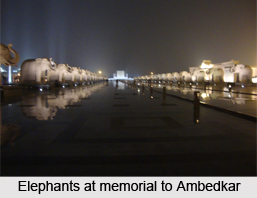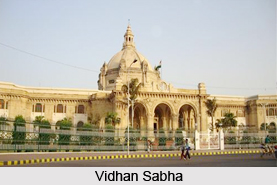 Lucknow, the capital city of the state of Uttar Pradesh, is the administrative centre of Lucknow District and Lucknow Division. This city is popular for its multicultural identity. Beautiful gardens, courtly manners, music, poetry, and exotic cuisine of Lucknow are well known throughout the country and abroad. This city is also regarded as the 'The City of Nawabs', 'Golden City of the East' and 'The Constantinople of India'. This vibrant city has witnessed a tremendous economic boom over the years and is rated among the top ten developing metro cities of the country. This lavish city is renowned for its depth in the field of Urdu and Hindi literature. Lucknow also has several historical monuments and sites that attract the people from various regions of the world.
Lucknow, the capital city of the state of Uttar Pradesh, is the administrative centre of Lucknow District and Lucknow Division. This city is popular for its multicultural identity. Beautiful gardens, courtly manners, music, poetry, and exotic cuisine of Lucknow are well known throughout the country and abroad. This city is also regarded as the 'The City of Nawabs', 'Golden City of the East' and 'The Constantinople of India'. This vibrant city has witnessed a tremendous economic boom over the years and is rated among the top ten developing metro cities of the country. This lavish city is renowned for its depth in the field of Urdu and Hindi literature. Lucknow also has several historical monuments and sites that attract the people from various regions of the world.At Lucknow, for instance, Asafi Imambara, which is also known as known as Bara Imambara, Chhota Imambara, Shah Najaf, etc. are the popular monuments of architectural importance. Some other interesting places of exploration at this city are Chattar Manzil, Dilkusha, Picture Gallery, State Museum, Shaheed Smarak, Ambedkar Memorial, Planetarium, and more. Some of the monuments with architectural importance built in the British era in Lucknow comprise the 'Vidhan Sabha' (State Legislative Assembly), the Charbagh Railway Station, with its unique domes, pillars and arches, St Joseph's Cathedral and Clock Tower.
The 'Dilkusha' or Heart's Delight was built by Saadat Ali Khan in between 1798 to 1814 as a hunting-box in the centre of a large wooded park. It was constructed in a classical European style with square corner towers. But, it is now a ruin set among flower gardens. In the south-west of Dilkusha lies the 'Bibiapur Kothi', which is a two-storey building designed by architect Claude Martin. It is presently a Government Dairy Farm. To the north-west of Dilkusha stands 'La Martiniere Boys' School', formerly Constantia, one of the most fascinating buildings in the city. It was designed as a palace-tomb by Major-General Claude Martin (1735-1800). Constantia is a huge building with the most peculiar hybrid design. It is situated on a massive platform and it comprises a symmetrical block with curved semicircular wings added in the year 1840. The first storey has corner pavilions and statuary in full silhouette on the skyline. Another popular monument is Christ Church (1860) was designed by General Hutchinson as a memorial to the Mutiny dead and was enlarged and improved in the year 1904. It consists of many fascinating memorial tablets and brasses.

Bara Imambara is considered as the largest domed hall of the world. This monument significantly tells about the glory of the past. It was designed by Kifayat-ullah for Asaf-ud-Daula in the year 1784 as a famine-relief measure. It is one of the most impressive buildings in India, dominating the north-west corner of the city. An imambara is the general term for a building in which the festival of Muhar-ram is celebrated, and sometimes, as here, used for a mausoleum. It is approached through a square gateway crowned by an octagonal pavilion, from which two courtyards raise one above the other and linked by wide flights of steps. A lofty mosque with two minarets surrounds the west side. Over the main chamber a staircase leads to a series of rooms and passages designed as a maze, above which is a flat roof from which magnificent views of the city can be obtained. Outside the Great Imambara and straddling the road is the Turkish Gate or Rumi Darwaza that is a 60 feet high doorway. It is another very beautiful monument of Lucknow. It was constructed by Asaf-ud-Duala in between 1784 to 1786. It harmonizes with the adjoining Great Imambara to produce a wonderful complex of Oriental forms.
For more, visit the link below: